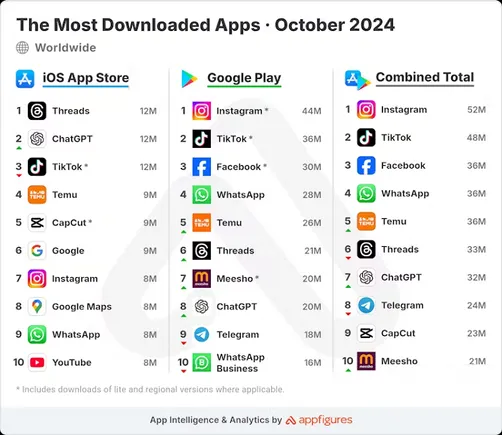For some of you reading this right now, managing marketing tools has become your full time job.
Agencies are buried under the weight of countless tools and software. Each one promises to streamline operations, optimize campaigns, and deliver unparalleled insights. Yet, collectively, they achieve the opposite – creating a tangled web of complexity that drains time, resources, and sanity. You’re not alone if your team spends more time navigating between platforms than crafting impactful marketing strategies. The problem is real, and it’s suffocating productivity across the board.
But here’s the twist – this tool overload isn’t just a roadblock to efficiency; it’s a silent business killer. Every minute lost in the labyrinth of logins and interfaces is a missed opportunity for growth. The costs are not just monetary, reflected in inflated monthly subscription fees that bleed your budget dry, but also in lost creative potential. When your brightest minds are bogged down by operational friction, innovation stalls, client satisfaction dips, and your agency’s competitive edge dulls. The clutter of too many tools isn’t just inconvenient; it’s a strategic crisis that demands immediate action.
The Problem of Marketing Tools Overload
It’s reported that marketing agencies, on average, juggle between 12 to 20 different tools to manage their operations, client communications, analytics, and campaign executions. With the average cost for these tools ranging from $50 to over $800 per month, per tool, the financial burden is considerable. Beyond costs, the operational inefficiency of switching between various platforms can consume up to 30% of an employee’s time, reducing productivity and profitability.
Challenges Stemming from Multiple Tool Use
Financial Overhead: The cumulative cost of subscriptions can drain an agency’s resources, particularly when paying for overlapping features across different tools.
Training and Onboarding: Each tool has its learning curve, requiring time-consuming training for new team members and ongoing education for updates.
Integration Complexities: Lack of interconnectivity between tools can lead to fragmented client data and disjointed strategies.
Communication Breakdowns: With client information scattered across platforms, maintaining consistent communication can be challenging.
Suboptimal Utilization: Agencies might find themselves under-utilizing tools due to overlap in functionalities or simply forgetting about underused subscriptions.
Renewal Management: Keeping track of renewal dates and deciding whether to continue, upgrade, or cancel subscriptions adds administrative burden.
Data Silos: Information stored in separate tools can create data silos, hindering comprehensive analysis and strategic decision-making.
As if that wasn’t enough, there are even more challenges that weed their way into our agencies!
Data Fragmentation and Loss: Each tool collects its own data, leading to fragmented customer insights scattered across platforms. This separation not only complicates a unified analysis but can lead to valuable information falling through the cracks, harming decision-making processes and customer relationship management.
Inconsistency in User Experience: Different tools have different interfaces and learning curves, which can lead to inconsistency in the user experience for your team. This inconsistency requires constant adjustment and reduces overall efficiency as team members switch between platforms.
Increased Security Risks: Every additional tool introduces new vectors for potential security breaches. Managing multiple tools means managing multiple security protocols, updates, and potential vulnerabilities, increasing the risk of sensitive data being compromised.
Compliance and Regulatory Challenges: With data protection regulations like GDPR and CCPA, using multiple tools complicates compliance. Each tool must be vetted for compliance, and data managed across platforms must consistently meet regulatory standards, adding layers of complexity to operations.
Duplication of Efforts: Without a centralized system, teams can inadvertently work in silos, duplicating efforts and wasting resources. This lack of coordination can lead to inconsistent messaging to clients and missed opportunities for cross-functional collaborations.
Inflexibility and Slow Response to Market Changes: The agility to respond to market changes is crucial. A scattered toolset can slow down the ability to pivot strategies quickly, as changes must be manually updated across multiple platforms, delaying response time and potentially costing market share.
Difficulty in Scaling Operations: Scaling your agency’s operations becomes increasingly complex with a patchwork of tools. Each tool has its limitations and scaling up often means renegotiating contracts, training more team members, and integrating more data, making growth more cumbersome than it needs to be.
Tool Dependency and Vendor Lock-In: Relying on a wide array of tools can lead to dependency on specific vendors, making it difficult to switch to more efficient solutions due to data migration challenges, steep learning curves, or contractual obligations. This “vendor lock-in” can stifle innovation and limit flexibility in adopting new, perhaps more effective, technologies.
Diminished Team Morale and Productivity: Navigating multiple tools can be overwhelming and frustrating for team members, leading to decreased morale. Moreover, the constant switch-tasking required to manage these tools can significantly hamper productivity, diverting energy away from creative and strategic initiatives.
Now, clearly we can’t stop using marketing tools and cannot stop using multiple tools, but there are a few solutions to help or even transform these challenges into opportunities.
Band-Aid Solutions to Tackle Marketing Tools Overload
In search of relief, many marketers turn to temporary fixes, hoping to cut through the fragmentation and inefficiency. These workaround strategies, often seen as quick fixes, do indeed offer some respite. However, they’re not the ultimate answer to the deeper, systemic challenges at play. Recognizing their limitations is the first step; acknowledging the need for a more comprehensive solution is the next.
Centralized Tool Tracking: Utilizing a spreadsheet or a specialized tool management platform like Torri can help monitor tool usage, costs, and renewal dates.
Designated Tool Manager: Assigning a team member the responsibility of overseeing tool selection, integration, and renewals ensures better management and cost efficiency.
Regular Audits: Periodically reviewing tool usage and effectiveness can identify opportunities to consolidate tools or eliminate redundant subscriptions.
Emphasizing Integrations: Prioritizing tools that offer extensive integration capabilities can reduce data silos and improve workflow continuity.
Unified Communications Hub: Adopt a platform that centralizes communications (emails, chats, notifications) to avoid toggling between tools for different types of messages, enhancing immediacy and reducing context-switching.
Automation and Workflow Tools: Implement automation tools that can integrate with multiple systems to streamline repetitive tasks and move data automatically between platforms.
Staff Training Programs: Invest in comprehensive training programs to improve team proficiency with existing tools, maximizing their utility and ensuring that all features are fully leveraged.
While these workaround strategies can patch up operational inefficiencies to an extent, they bear with them an inherent truth: they are not panaceas. Instead, they serve as interim measures while the quest for a holistic, enduring solution continues. A solution that doesn’t just plaster over the cracks but rebuilds the foundation. Agencies need a unified, integrated system that consolidates disparate tools into one cohesive platform — a true antidote to tool sprawl rather than a temporary fix. It’s time to move beyond mere mitigation towards a transformative consolidation.
HighLevel: The All-In-One Marketing Tool
After going through all of the challenges using multiple tools presents, and even exploring potential workarounds and band-aids, it’s clear that an integrated approach is the most effective solution. Enter HighLevel, an all-in-one platform tailored for marketing agencies seeking to streamline their operations and reduce overhead.
Categories of Tools HighLevel Replaces:
CRM: Replacing standalone systems like HubSpot, Salesforce, and Nimble, HighLevel offers comprehensive CRM functionalities including lead tracking, customer segmentation, and sales pipeline management.
Email Marketing: No need for Mailchimp or ActiveCampaign. HighLevel provides powerful email campaign tools, automations, and analytics.
Landing Page Builders: Forget about Unbounce, Leadpages, or ClickFunnels. HighLevel enables the creation of high-converting landing pages within its ecosystem.
Appointment Scheduling: Ditch Calendly and Acuity; HighLevel comes with built-in scheduling capabilities to manage all your appointments.
Analytics and Reporting: With HighLevel, there’s no need for separate analytics tools like Google Analytics for basic reporting needs, as it includes performance tracking and insights.
And that just scratches the surface. In fact, many marketing agencies can save upwards of $7,000 a month by switching to HighLevel and dumping all their other tools!

Sales funnels, website builders, surveys & forms, SMS marketing, workflow automations, reputation management, communities, document signing… the list goes on!
HighLevel stands out not only for the breadth of tools it replaces but also for its cohesive ecosystem that ensures data is shared seamlessly across functions, enhancing productivity and enabling more strategic, data-driven decisions.
Wrapping Up
The challenges of managing multiple marketing tools are significant, yet surmountable with a strategic approach to tool consolidation and the adoption of integrated platforms like HighLevel. By simplifying their tech stack, agencies can reduce costs, improve efficiency, and allocate more resources toward growth and innovation. HighLevel isn’t just a tool; it’s a game-changer for marketing agencies ready to leave the chaos behind and embrace a streamlined future.
Related Resourcs for SMB Owners & Marketers










